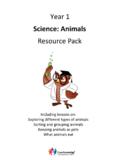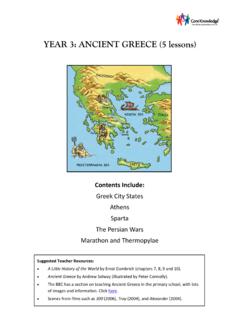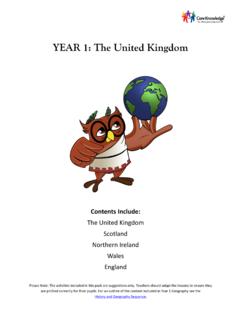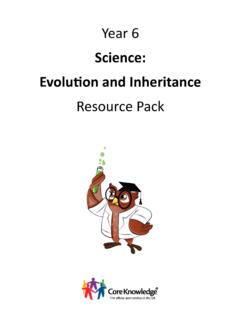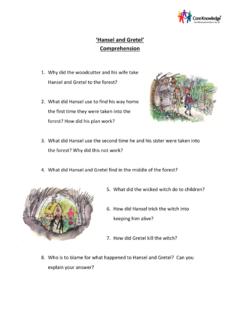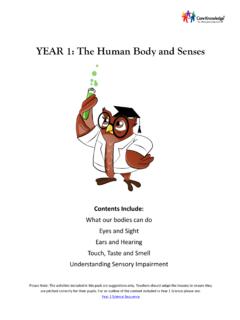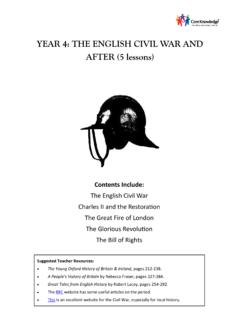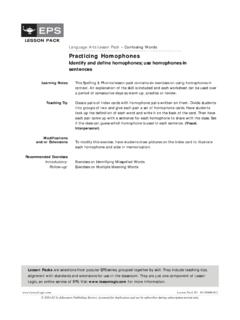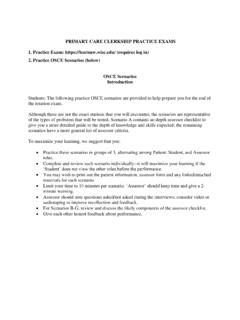Transcription of YEAR 4: LIFE IN ANCIENT ROME (8 lessons) - Core …
1 year 4: life IN ANCIENT ROME ( 8 lessons ) Contents Include: The Roman City Roman Sports Pompeii Christianity The Fall of Rome Suggested teacher Resources: A Little History of the World by Ernst Gombrich (chapters 13, 15 and 17). The BBC primary site has Roman resources and information for pupils. BBC History has overviews of different aspects of Roman history. Rome: The Rise and Fall of an Empire (History Channel) covers the period. Also, TheRomans Triple DVD Box Set (BBC) by Mary Beard covers everyday life in 1. Pax Romana For 200 years following the reign of Emperor Augustus (27 AD), there was a period of history known as the Pax Romana (Roman peace). The strength of the Roman Empire, coupled with its large territorial reach, meant no civilisation could oppose Rome. Consequently, Europe experienced an unprecedented period of peace.
2 Without having to put down continual rebellions, the Roman Empire was able to focus on building great cities and developing its famed technologies such as public baths, aqueducts and roads. During the Pax Romana, Roman civilisation reached the height of its sophistication. See page 136-7 of What Your year 4 Child Needs to Know. Learning Objective Core Knowledge Activities for Learning Related Vocabulary Assessment Questions To understand why the Pax Romana took place. Pax Romana means Roman Peace , and refers to a two hundred year period in European history when there were few wars or rebellions. The reason that the Pax Romana took place was that the Roman army was so powerful, few other European powers were able to oppose them. During the Pax Romana, Roman civilisation reached its peak.
3 This saw the building of a series of remarkable Roman cities across Europe, Asia and North Africa. Have a class discussion about whether the Pax Romana was a good thing for those people living in the Roman Empire. In order to inform this discussion, pupils should sort a selection of features of the Pax Romana into good and bad features for people living under Roman rule (resource 1). Write an explanation of why Pax Romana occured and describe how it impacted on people living under Roman rule. Discuss why Rome became known as the Eternal City . Pax Romana Eternal City What does the Pax Romana mean? How was the Pax Romana achieved? What were the benefits of the Pax Romana? Who suffered from the Pax Romana? 1. Pax Romana: good or bad? People disagree over whether living under the control of the Roman Empire was a good thing.
4 Read the following statements and decide whether each feature was good or bad. The Roman army was so strong that few people dared stand up to them. For this reason, there were far fewer wars and rebellions fought during the Pax Romana. The period that followed the fall of the Roman Empire was far more violent, and worse to live through. Those living in lands conquered by the Romans were regularly forced into slavery. This could mean any number of cruel jobs, where slaves were worked into an early grave. Worst of all, slaves were fed to lions in the Coliseum to provide entertainment for Roman citizens. Romans would tolerate those of other religions living in their empire, provided that they did not also deny the validity of the Roman Gods. The Christians, who insisted that there was only one God, were heavily persecuted for this reason, and many Christians were enslaved.
5 All territories in conquered areas had to pay taxes to Rome. For this reason, the city of Rome and its inhabitants grew fabulously rich. Other nations within the Roman Empire resented this, and wanted to stop paying so much tax. The Roman army contained soldiers from all over the Roman Empire. Many of them were recruited for their particular skill, such as Spanish cavalry or Persian archers. People from around Europe were able to enjoy the benefits of a soldier s life , but also stood a high chance of dying young. Those who lived in conquered territories could become Roman Citizens, and reach the highest levels of power within the Roman empire. There were Roman Emperors who were originally from Spain, Gaul, North Africa and the Near East. Rome itself was a highly multicultural city.
6 Romans tolerated a certain level of local culture. Whilst some Roman customs would be enforced in new provinces, people would be allowed to continue worshipping their own gods and protect their local culture. Instead of fighting, the Romans could focus on building great cities with advanced technology. In lands that they conquered, the Romans built cities with sewers, public toilets, baths, running water and stadiums. This was normally a great improvement from what was there previously. lesson 2. Roman Waterworks Of all the Roman technologies, their waterworks were the most impressive. Large Roman towns were central to the control of their Empire, and the inhabitants needed a constant supply of fresh water. To provide this, Romans built enormous aqueducts, often tens of miles long, to redirect water flowing through rivers and springs into cities.
7 In turn, these aqueducts would feed the Roman baths, public toilets and sewers, keeping the inhabitants clean and free of disease. Roman baths were central to their way of life , and provided not only a source of hygiene, but one of the main areas for socialising and relaxing. See page 136 of What Your year 4 Child Needs to Know. Learning Objective Core Knowledge Activities for Learning Related Vocabulary Assessment Questions To understand the importance of waterworks for Roman citizens. Romans built large cities across their Empire, but these required a constant supply of fresh, clean water. The Romans invented the aqueducts, which were large bridge-like structures which redirected water flowing from rivers and springs to the centre of a town. Water from the aqueducts would then be used to feed public toilets, sewers, baths and fountains.
8 Explain the different waterworks technologies pioneered by the Romans: aqueducts; baths; sewers and public toilets. Show pupils images of Roman ruins (such as here , here , here, and here), and ask them to match them to the different waterworks. Study the process of a trip to a Roman Bath: the Apodyterium; Tepidarium; Caldarium and Frigidarium. This and this website provide a useful step by step guide. Complete a storyboard about a trip to the baths, explaining what would occur at each stage (resource 2). Horrible histories have some amusing videos on toilets, this documentary explains the building of the aqueducts, and this recreates a Roman bath. aqueduct Roman baths sewers What did Roman aqueducts do? Why did Roman cities need aqueducts? What happened at Roman baths?
9 Why did Romans enjoy going to the baths so much? 2. A trip to the Roman Baths Study the process of taking a trip to the Roman Baths. Then complete the story board, making sure that you include the key stages: the Apodyterium; Tepidarium; Caldarium and Frigidarium. 2. A trip to the Roman Baths (complete) Study the process of taking a trip to the Roman Baths. Then complete the story board, making sure that you include the key stages: the Apodyterium; Tepidarium; Caldarium and Frigidarium. First, I did some exercise in the palaestra. This involved running, wrestling, boxing and ball games. Having got changed, I moved into the tepidarium, a warm room where I washed with olive oil and a strigil. From there I moved on to the caldarium, which had a very hot, steamy bath a bit like a sauna today.
10 I then visited the frigidarium, a very cold bath. After the caldarium, the cold was a real shock but really woke me up. Having done my bathing, I hung out with my friends, having a massage, buying food, and listening to poetry and music. I then went to the changing rooms, known as the apodyterium, to strip completely naked, as was the rule! lesson 3. The Roman Forum At the centre of any Roman city was the forum . This was the hub of all civic and community life . People would come to the forum to shop, visit temples, attend law courts, or just catch up with their friends. The ruined forum in Rome is now one of the city s main attractions, and is surrounded by the remains of many of the city s greatest buildings, such as the Temple of Saturn, the Arch of Septimius Severus, and the Temple of Caesar.

